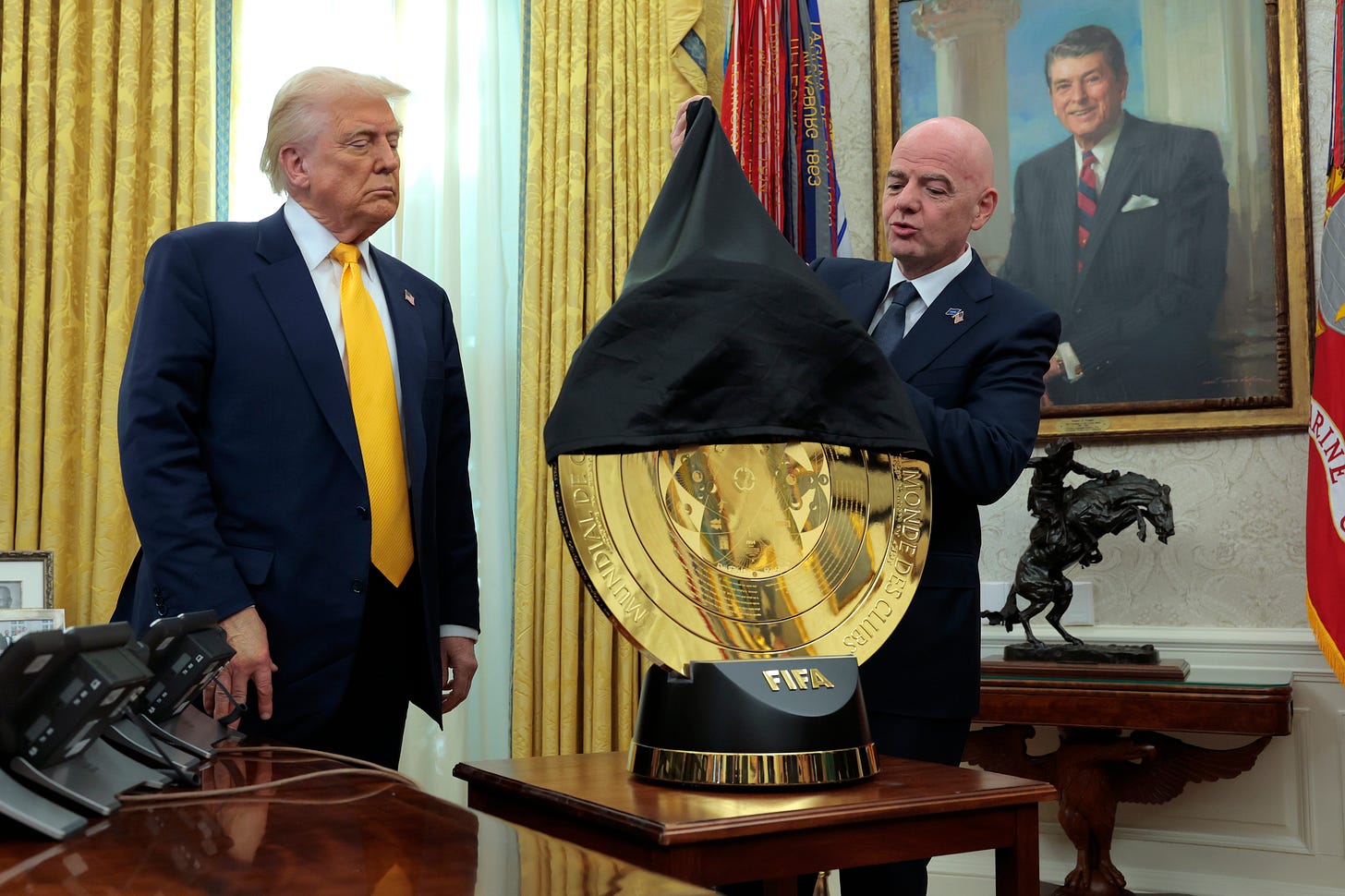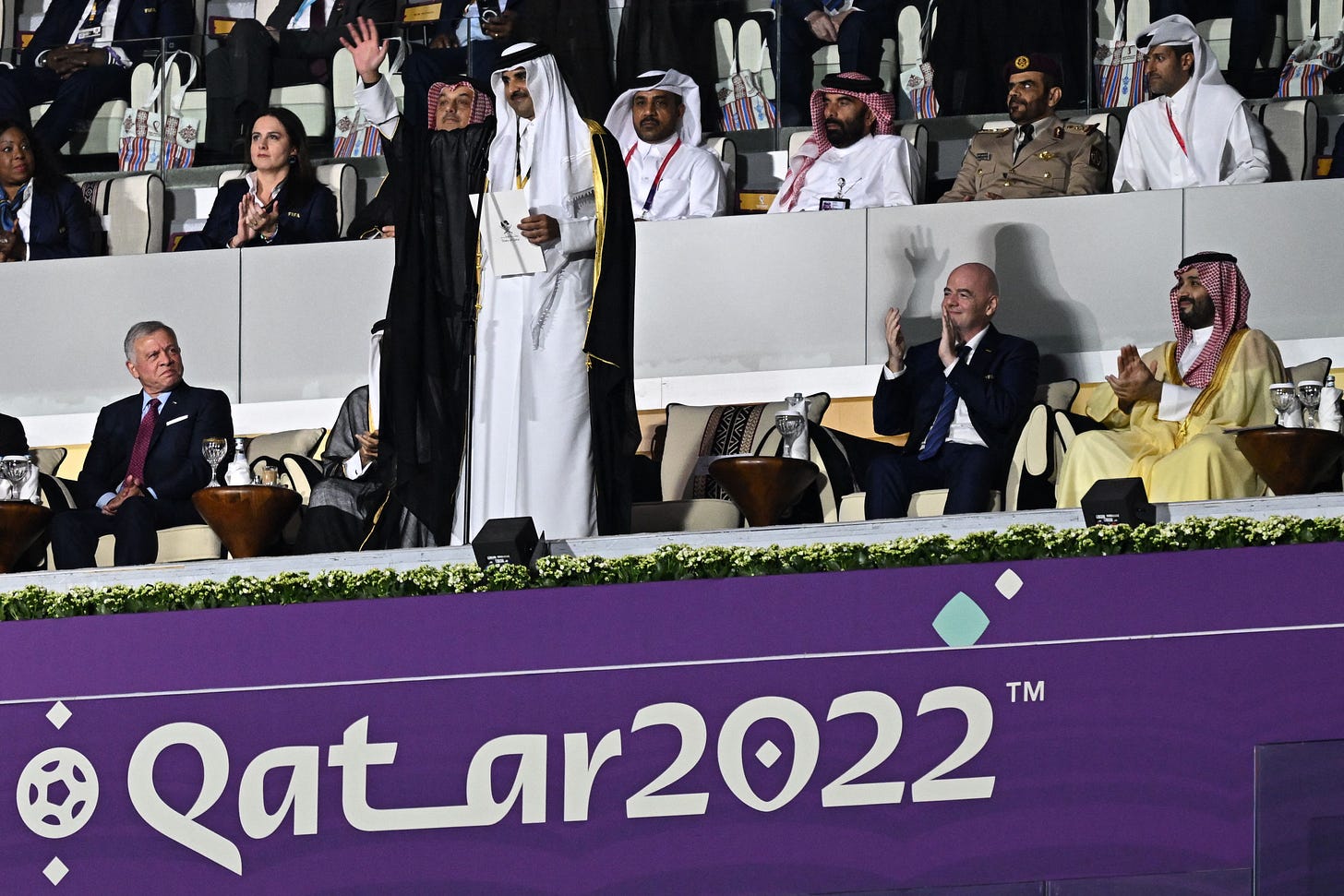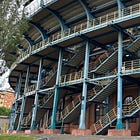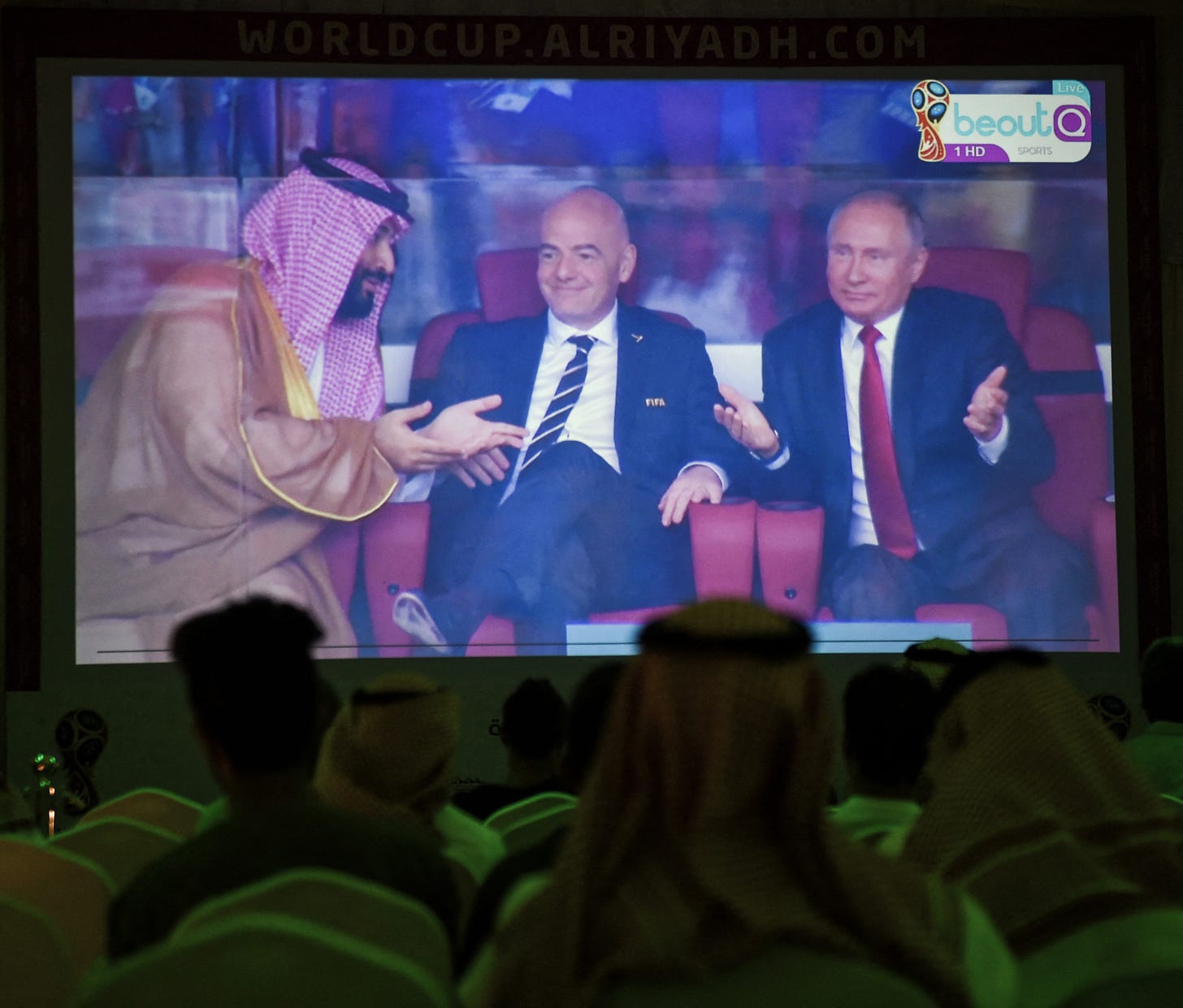The Very Important Tournament
The Club World Cup is cynical and superficial, a project that reflects its creators.
It’s not a great sign for the Club World Cup that FIFA is offering local Miami college students five tickets to the tournament’s opening game for $20. That’s according to Adam Crafton in The Athletic, who notes that seats for Lionel Messi’s Inter Miami vs Egypt’s Al-Ahly on Saturday were initially listed for $349 in December.
Thanks to FIFA’s “dynamic pricing model,” which football’s “governing body” is presumably test-driving ahead of World Cup 2026, the sticker price fluctuates based on demand, and that primal force of economic nature has been moving in only one direction. In January, these same tickets fell to $230. By May, they’d hit around $110, and by last week, they started at $55. Now, if one college kid forks over $20, four of their friends can go — and occupy seats that might otherwise be visibly empty on the television broadcast — for free.
It will all look a lot different by the knockout rounds, of course. Once the European heavyweights start crashing into each other in pursuit of $1 billion in prize money, people will start showing up. Americans love their top-level European football, and despite the rampant inequality, this is a spectacularly wealthy country. There are plenty who can afford to get dynamically priced.
By the end, they could be treated to some competitive stuff. Chelsea or Manchester City could take home more than $130 million if they were to win the tournament, a major boon in an era where — in theory — clubs can only spend so much more than they bring in. That is what has lured the big teams Stateside, along with publicity and exposure to the American market, following a cluster of international fixtures that followed a long and arduous club season, which followed Copa América and EURO 2024 last summer, which followed a long and arduous club season. There is no offseason now for the top-shelf clubs.
This will be horrible for player welfare, and ultimately terrible for fans when their favorite players are missing for the actual season after tearing a hamstring in Charlotte, North Carolina. But there’s a lot of money on the table, you see, and certainly none under it.
Since its first edition in 2000, the Club World Cup has never been a major cultural force. It was not totally unreasonable when, in 2016, FIFA President Gianni Infantino announced plans to change the tournament format from seven teams to 32 and move its place on the calendar. Then it became a 24-team tournament that was cancelled due to COVID, and then, in December 2022 — during the World Cup in Qatar — Infantino announced in Doha that his brainchild would once again feature 32 contestants and kick off in the summer of 2025.
It probably didn’t take much more than that to get teams from outside of Europe interested, and that’s worth remembering as we approach kickoff: This kind of facetime with a wider audience, and the chance to play the world’s biggest and richest clubs, is a major boost to your Al-Ahlys and Pachucas. The South American teams always relished the opportunity to stick it to the European champions in the old format, and that won’t change here.
But this is not a grassroots phenomenon, and astroturf costs money. Except for a while there, nobody was producing a credit card. Infantino and FIFA were trawling the world in desperate search of TV broadcasters to carry this new, expanded, enhanced, supercharged Club World Cup. They couldn’t find anybody interested, to the point that Infantino organized “an emergency meeting with broadcasters” to try to drum up interest.
And then, like magic, a worldwide broadcaster appeared with $1 billion in hand: DAZN would show this glorious new tournament.
By coincidence, a couple of months later, DAZN announced a $1 billion infusion from SURJ Sports Investment, a vehicle funded by the Saudi Public Investment Fund (PIF). Executives from DAZN assured The Athletic these things have nothing to do with one another. In another unrelated event, FIFA delegates walked out of a meeting last month after it started three hours late due to Infantino’s tardy arrival from a trip with American President Donald Trump to Saudi Arabia and Qatar.
The latter recently hosted a World Cup that was awarded under extremely normal circumstances, and Saudi will host in 2034. This was decided in another very normal process.
On October 4, 2023, FIFA dropped a press release announcing the 2030 World Cup would be held in six countries across three continents. This was unprecedented to say the least. Farther down the press release, it was announced that, due to FIFA’s rules around rotating which continent gets to host, only countries from Asia and Oceania could apply to host in 2034. (After all, North America had 2026, and 2030 had just been spread across Europe, Africa, and South America.) 27 days later, on Halloween, FIFA announced Saudi Arabia was the only bidder to host in 2034. The stars certainly aligned for the Kingdom on that one.
But 11 years is a long time in sports, business, and geopolitics. Saudi’s reputational rewrite through football had already begun. That previous summer of 2023, the Saudi Public Investment Fund had taken over the country’s four biggest club teams and started pumping in world-stopping money to attract big-name players like Neymar, Karim Benzema, Sadio Mané, and N’Golo Kante to join Cristiano Ronaldo in the Saudi Pro League.
———————————
Check out the CATHEDRALS series reporting on the ground from the world’s great stadiums:
———————————
Overall, these moves haven’t done much to bring attention to Saudi football. Only Ronaldo garners international headlines consistently, and mostly for his growing personal goal tally at his advanced age. But what if it was really about the AFC Champions League — Asia’s top club tournament — all along? High performance in that competition has delivered four teams from Asia to the Club World Cup, where they’ll play matches against your Inter Milans and Bayern Munichs. As many as three or four of these new Saudi Pro League superteams could’ve been there with the big dogs in New York and LA.
In the end, only one Saudi team made it — Al Hilal — and that must be something of a disappointment to the planners of this project. But it may all have been worth it by Wednesday, when the team from Riyadh shares a pitch with mighty Real Madrid on Matchday One. (The stars really aligned for the Kingdom on that one!) The outcome at that point is almost secondary, though the club is reportedly in talks with Saudi Pro League rivals Al Ittihad about getting N’Golo Kante to come play for them at this tournament. It’s like Arsenal loaning Tottenham a key player to help an old friend thrive in the Europa League.
If that one goes through, it should be proof positive that the Saudi squad’s participation here is part of a much wider enterprise.
In the end, all that is just one strain of the virulent cynicism coursing through this event. Top-level football has become a very cynical endeavor, as the outright corruption of years past has given way to more standard commercial relentlessness: more competitions, expanded tournaments, biweekly merch drops. But there is a stunning superficiality to the Club World Cup, an almost complete absence of human stories and non-monetary stakes.
It really is just about the money for everybody involved, except maybe for its father, Gianni Infantino. For the Swiss-Italian — who at this point is pushing Sepp Blatter’s tenure as FIFA chief into a new light — it may be more about his personal legacy or throwing FIFA’s weight around in its timeless struggle with UEFA, whose EUROs and Champions League provide the prestige competition for the World Cup. But certainly, the FIFA president has chosen the perfect partners in this new endeavor: the Gulf monarchs, who are using their incalculable wealth to buy a new place in the world; and Donald Trump, whom the American press has collectively agreed to refer to as a “transactional” figure to avoid having to say that he has no ethics.
Any joy from seeing Urawa Red Diamonds get to match themselves against Europe’s best will be offset by the knowledge that they’re more props than characters in the play. A triumph for Al Hilal over Real Madrid is, unfortunately, much more than a talented team finding victory over the biggest giant of them all. And a triumph for Madrid — or City, or Chelsea — will mostly be a seismic destabilizing force for the domestic game back home. These teams will return to their leagues with tens of millions of dollars at a minimum that their competitors do not have. It’s like putting the existing inequities of the game on steroids, shoveling more towards those who need it least. It’s fitting, then, that this will take place in America.
And in the end, it’s safe to say that a lot of top players are going to get injured — if not during the tournament proper, then sometime the following season. We can only hope there won’t be too many ill-timed ACL tears or popped hamstrings that keep the most fantastic athletes and artists in the game out of the World Cup next summer. But if they do miss out a year from now, we all miss out on seeing them play.⚽︎









